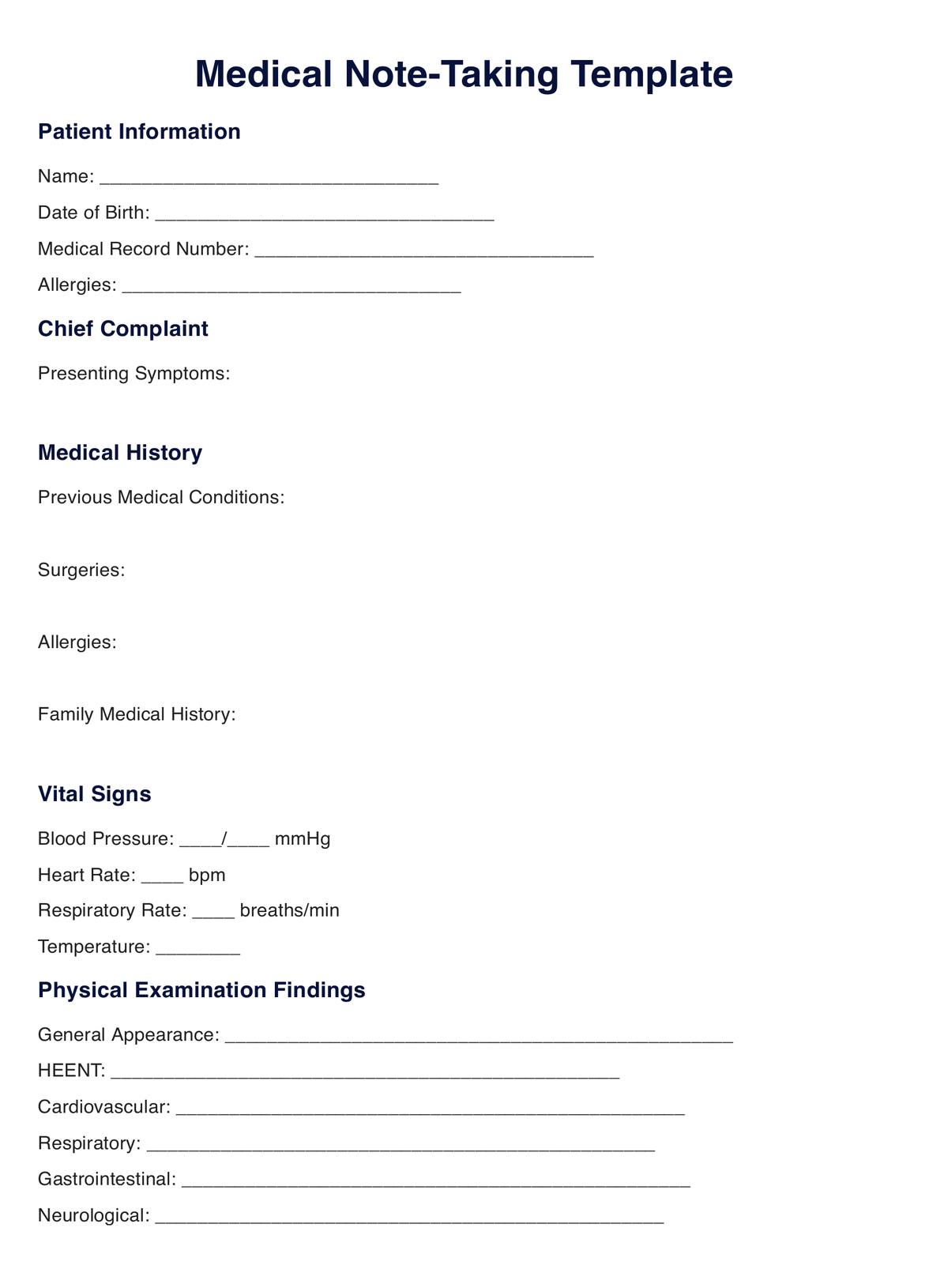To create a template, use a word processor or note-taking app and outline sections for patient information, medical history, vital signs, assessments, plans, and additional notes. Customize it based on your practice's specific needs.

Note Taking Template
Elevate patient care with our Note Taking Templates. Simplify documentation, streamline workflows, and enhance efficiency. Download now!
Note Taking Template Template
Commonly asked questions
Note-taking templates are used during patient encounters, consultations, and routine check-ups. They are structured forms to record patient information systematically, ensuring accurate and consistent documentation.
Healthcare professionals fill in the templates during patient interactions. They document vital signs, medical history, assessments, and treatment plans. Templates streamline the documentation process, making it efficient and organized.
EHR and practice management software
Get started for free
*No credit card required
Free
$0/usd
Unlimited clients
Telehealth
1GB of storage
Client portal text
Automated billing and online payments











